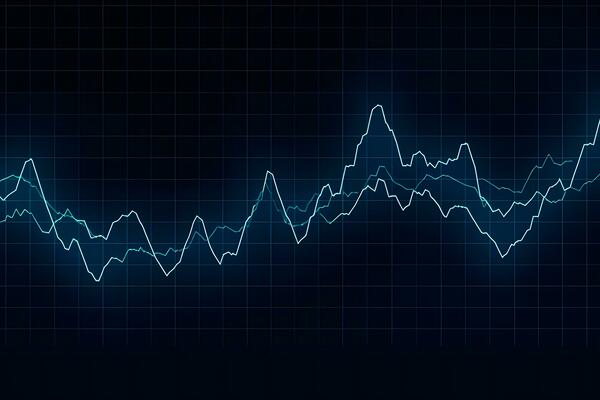Market Volatility as an Asset Class: Trading the Swings with Precision

Market volatility often sparks feelings of unease among investors. A sudden swing in prices can seem like a storm threatening to derail even the most carefully planned strategy. Yet, volatility itself is not inherently negative—it represents movement, energy, and opportunity. Increasingly, professional traders view volatility not just as a background risk but as an asset class in its own right, one that can be traded, managed, and even harnessed for growth.
By approaching volatility with precision and perspective, traders can turn market swings into a tool rather than a threat.
Volatility as an Asset Class
So how does volatility transform from a risk factor into an asset class? The key lies in financial instruments specifically designed to track or reflect market volatility. Products such as volatility indices, exchange-traded funds (ETFs) tied to volatility, and options strategies allow investors to trade directly on expectations of future market swings.
This creates a fascinating dual perspective:
- For hedgers, volatility products provide a shield. A portfolio manager exposed to equity risk might buy volatility instruments to offset potential losses during turbulent times.
- For speculators, volatility is a profit engine. Traders who correctly anticipate spikes or drops in volatility can benefit from movements independent of the underlying asset classes.
By treating volatility as its own tradable category, investors can add an extra dimension to portfolio management. This is not about replacing traditional asset classes like stocks and bonds, but about layering volatility as a complementary piece of the puzzle.
Tools and Strategies for Trading Volatility
Trading volatility requires precision, discipline, and a toolkit tailored to shifting conditions. Here are some of the most common approaches:
Options Trading
Options—contracts that give the right but not the obligation to buy or sell an asset at a certain price—are the classic instruments for volatility trading. Strategies like straddles or strangles allow traders to position for large price swings in either direction, essentially betting on volatility rather than market direction.
Volatility ETFs and ETNs
Exchange-traded products that track volatility indices, such as those linked to the VIX, offer a more accessible way to gain exposure. These products allow investors to trade volatility much like they would a stock or bond, providing liquidity and flexibility.
Futures on Volatility Indices
Futures contracts tied to volatility indices provide another avenue for speculation or hedging. They allow traders to take direct positions on the expected level of volatility over a specific timeframe.
Hedging with Volatility
Beyond speculation, volatility can also be used as insurance. For example, during market uncertainty, holding a long volatility position can help offset losses in equities, creating a more balanced portfolio.
Each of these strategies requires a deep understanding of how volatility products behave—particularly since they often move in ways that differ from traditional securities.
The Psychology of Volatility Trading
Trading volatility is not just about technical instruments; it’s also about mindset. Volatility often coincides with heightened investor emotions—fear, greed, and uncertainty. For traders, this presents both a challenge and an opportunity.
Those who succeed in this space tend to share common traits:
- Patience, to wait for setups rather than chasing every market swing.
- Emotional discipline, to avoid overreacting when volatility spikes.
- Adaptability, since volatility regimes can change rapidly.
Ultimately, treating volatility as an asset class demands a level of detachment—seeing swings not as threats but as signals to be read and acted upon with care.
Why Volatility Matters for Every Investor
Even if a trader chooses not to trade volatility directly, understanding its role in markets is essential. Volatility influences asset pricing, shapes investor behaviour, and impacts portfolio returns.
For those who want to deepen their knowledge of how volatility works, its drivers, and its role in investment strategy, it’s useful to look at this site, which offers insights into why volatility matters for all market participants.
By recognizing volatility’s impact, investors can make more informed decisions—whether that means hedging against risks, exploiting trading opportunities, or simply building greater resilience into their portfolios.
Balancing Risk and Opportunity
Volatility trading is not without challenges. Products linked to volatility can be complex, with risks that differ from traditional securities. Misunderstanding how these instruments work can lead to costly mistakes.
That said, with the right education, strategy, and mindset, volatility can be a valuable tool for professional traders. Rather than being at the mercy of unpredictable swings, investors who learn to work with volatility can add a new dimension of control to their portfolios.
Think of it this way: instead of dreading market storms, volatility traders learn to sail through them, harnessing the winds of change to propel their strategies forward.
Conclusion
Market volatility will never disappear. Prices will always fluctuate, sometimes dramatically, reflecting the constant push and pull of global events, economic shifts, and investor sentiment. The question is not whether volatility exists, but how we respond to it.
By treating volatility as an asset class, traders can shift from being passive observers to active participants—managing risk, seizing opportunity, and building resilience in the face of uncertainty.
With precision and preparation, volatility transforms from a source of anxiety into a source of strength. For those ready to embrace it, market swings become not obstacles but stepping stones to more dynamic and adaptive trading strategies.







